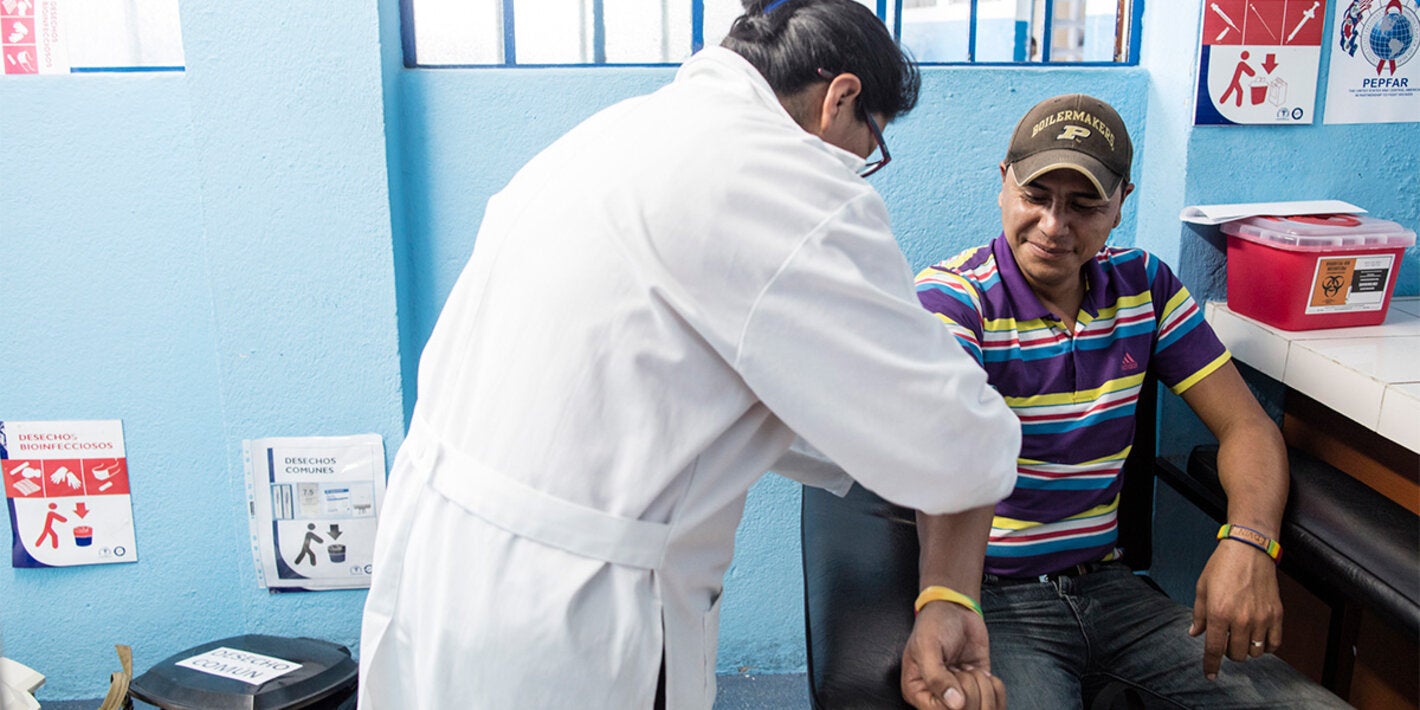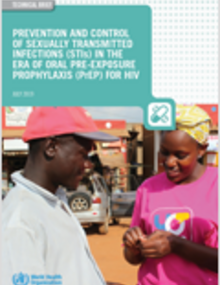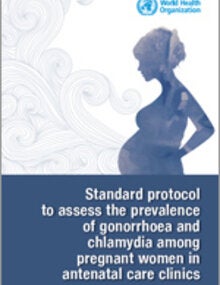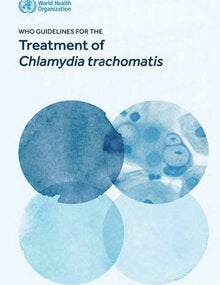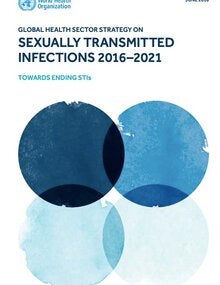Chlamydia is a bacterial infection, caused by Chlamydia trachomatis. It is the most common bacterial sexually transmitted infection (STI) worldwide, occurring most frequently among young sexually active adults. The prevalence of C. trachomatis infection is highest among girls aged 15–19 years, followed by young women aged 20-24 years.
C. trachomatis is spread by having unprotected vaginal, anal, or oral sex with someone who has chlamydia, or from mother-to-child during childbirth.
C. trachomatis causes cervicitis in women and urethritis in men, as well as extra-genital infections, including rectal and oropharyngeal infections. Untreated chlamydial infection may cause severe complications for the reproductive health of women including infertility. Maternal infection is associated with serious adverse outcomes in neonates. Chlamydia diagnosis is usually based on laboratory tests, and uncomplicated infection can be easily cured with antibiotics, and is usually resolved within days or weeks.
Lymphogranuloma venereum (LVG), a genital ulcer disease (GUD) that affects lymphoid tissue is caused by a more invasive strain (serovar) of C. trachomatis, and it is increasingly prevalent among men who have sex with men (MSM) in some settings.
Non-ulcerative STIs, such as gonorrhea, chlamydial infection and trichomoniasis, have been shown to increase STI transmission, including HIV transmission and acquisition. Additionally, 10-40% of people with gonorrhea infection also have a Chlamydia infection.
Uncomplicated Chlamydia can be easily cured with antibiotics and is usually resolved within days or weeks. Approximately 70% of women and 50% of men do not show any symptoms from genital infections due to Chlamydia.
You can get Chlamydia by having unprotected vaginal, anal, or oral sex with someone who has Chlamydia. You can still get Chlamydia even if you had it in the past and got treatment for it. It can also be transmitted from mother-to-child during childbirth. Penetrative sex is not required for spreading Chlamydia. Skin-to-skin genital contact is a well-recognized method of spreading Chlamydia, as well as infected sperm or vaginal fluid coming in contact with the eyes.
Correct and consistent use of condoms significantly decreases the risk of infection during anal, vaginal or oral sexual contact. For all neonates, the WHO STI guideline recommends topical ocular prophylaxis for the prevention of gonococcal and chlamydial ophthalmia neonatorum (eye infection).
Approximately 70% of women and 50% of men do not show any symptoms. If you do have symptoms, they can appear in different forms. Women might notice irregular vaginal discharge, pain or a burning feeling when urinating, or bleeding after sex and between periods. Men might notice discharge from penis, pain or a burning feeling while urinating, and sometimes testicular pain.
If Chlamydia is left untreated, most genital infections will resolve naturally with no health problems, but untreated chlamydial infection may cause serious complications, mainly in young women, such as inflammation in the Fallopian tubes (tube than transport eggs from the ovary to the womb). This can cause pelvic inflammatory disease (PID). PID can lead to ectopic pregnancy (pregnancy outside the womb) and inability to have a baby.
In men health problems are less common, but the most common one is inflammation of the tube that stores and carries sperm. Rarely this can lead to inability to have a baby.
The risk of complications may increase with repeated infection. Infections at non-genital places are also common. Rectal infection may cause symptoms such a rectal discharge, rectal pain or blood in the stools, but in most cases, there are no symptoms. Throat infections can cause symptoms such as swelling in the back of the throat and mild sore throat, but symptoms are rare.
Chlamydial infection in pregnancy is linked with early birth and low birth weight. Infants of mothers with Chlamydia can be infected at delivery and may result in eye infection or pneumonia in the baby.
Laboratory tests are needed for Chlamydia diagnosis. The test can be done using many different samples, including a urine sample, or with cotton swabs to get a sample of the vagina. However, since laboratory diagnostic tests are not available in many countries, a qualified care provider may treat you based on the presence of symptoms such as vaginal and urethral discharge. There have been major developments in the diagnosis of gonorrhea including using rapid molecular diagnostic tests, some combined with tests for Chlamydia.
Chlamydia can almost always be completely cured with antibiotics and is usually resolved within days or weeks. For detailed information on recommended treatment, see WHO guidelines for the treatment of Chlamydia trachomatis.
- The global response to STI is currently guided by the Global health sector strategy on sexually transmitted infections, 2016 -2021.
- The Plan of Action for the Prevention and Control of HIV and Sexually Transmitted Infections (2016-2021) describes the strategic lines of action to be implemented by Member States and PAHO to enhance and expand the prevention and control of HIV and STIs in the Americas.
- In 2016, WHO launched the Guidelines for the Treatment of Chlamydia trachomatis, which provide updated treatment recommendations for common infections caused by Chlamydia trachomatis based on the most recent evidence





